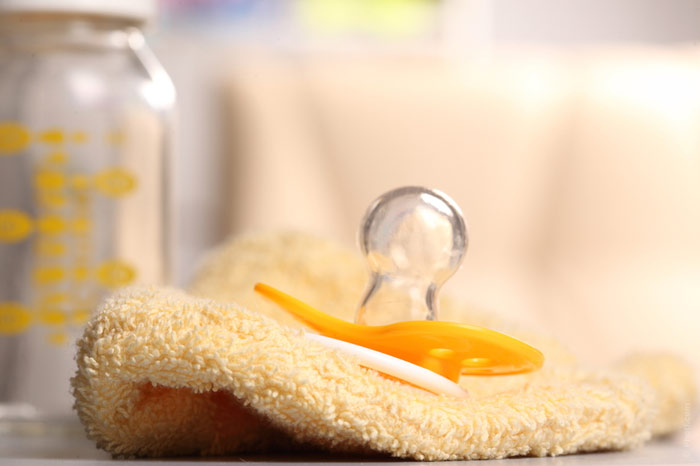Bottle Feeding Tips
If you’re planning to formula-feed your little one, you’ll have a lot to think about.

What kind of bottle to choose?
Actually you can leave this choice to the baby, judging by the signs he emits. Or, if you decided to go for plastic bottles, they weigh less and don’t break if you drop them. Glass bottles, on the other hand, will last longer. There used to be a disinclination to use plastic because of the bisphenol A chemical (BPA), but these days plastic bottles sold in the U.S. don’t contain any BPA.
Necessary lowdown on nipples
Again, it would be best if your baby showed preference to a certain kind of nipple. They are generally silicone or latex, shapes can vary a lot, and the hole sizes can be different, too, allowing for various flow capabilities. Check them to see they are not cracked or worn-out, in which case they ought to be replaced.
New bottles to be sterilized
Bottles and nipples straight from the store ought to be sterilized at once – place them in a pot with boiling water and let them soak there for 5 minutes. When you have sterilized them, wash after each use in hot water with detergent (either manually or in a dishwasher). Plastic bottles may last longer if you wash them manually, because plastic may leak chemicals in very hot water.
Bottle for breast milk or formula only
Your baby should be bottle-fed with pumped breast milk or formula only; avoid giving him juice or water. When mixing formula, follow the instructions closely – too much water means the formula will be overdiluted, too little water will make it hard for the stomach. It may occur that your baby needs a special kind of mixture or additions, but for this you should consult your pediatrician.
Necessary lowdown on formulas
It’s common to start out with cow’s milk-based formulas. Soy formulas are also a happy choice, and you may try hypoallergenic ones. Give preference to iron-fortified ones. They come concentrated, powdered or ready for usage. Towards the baby’s first half year he is supposed to take about 6-8 ounces in a feeding.
Temperature preferences
If your baby is happy with a cool bottle or a room-temperature one, it’s fine. Then again, he may like his formula warm, then place the full bottle in a pan with warm water or keep it under running hot water for a couple of minutes. The microwave can leave hot spots on the bottle and therefore cause discomfort, so it’s better not to use it. Before giving it to the baby test the temperature by dripping it on your hand (not on your wrist which is less sensitive).
Holding the baby
Fix a bib and get a cloth at hand to wipe the baby’s spit-out. Hold his head on your elbow raising it a little higher than his body. Get the bottle in a comfortable position and watch the eating process, encouraging him by burping if he slows down and taking the bottle away as soon as he’s finished.
Holding the bottle
No matter how tired you are, it’s advisable to keep holding the bottle while the baby is eating. It’s not quite safe to fix the bottle with a pillow or something – there are certain risks to be faced like choking, tooth decay and ear infections. Better keep up the physical contact and watch over the feeding time properly.
Finishing the feeding
Generally the baby shows unmistakable signs that the eating is over. He doesn’t suck any more, turns his head away, or even pushes the bottle away at a later age. It’s all right to offer him another go, but if he refuses steadfastly, finish the feeding.
Have a comfortable burp
The baby may not want to burp during the feeding or afterwards, but if she wants, assist her with it. Let her lie on your lap, on her tummy, so you can pat or rub her back easily. Hold her head in your hand. Or, have her on your shoulder, patting her on the back. Keep a wiping cloth at hand in case the baby spits up some milk.
Dealing with spitting up
If you think there is too much spitting up, maybe she wants to be burped more during eating. Avoid laying down the baby or keeping her playing right after eating, instead, try keeping her sitting for about half an hour, it should mitigate spitting. Consult the pediatrician about it if you think it is too excessive or it gets the baby fussy.
Is switching formulas worth it?
Excessive spitting may be due to the formula that is not quite right for the baby. It can result in various unwelcome conditions like reflux, vomiting, diarrhea, bloody stools, fussiness, or skin disorders. Discuss the desirability of the change of the formula with your pediatrician and act on their advice.
Milk storage
If you have formula left in the bottle after feeding, pour it out. Packages with liquid formula must be used up in 48 hours after they are open, and kept only in the fridge. Mixed powder formula is good for 24 hours. A formula that is out of the fridge for more than 2 hours must go to the garbage bin. Avoid preparing large portions of formula.
Freshly pumped breast milk can stay at most 5 hours in normal conditions. When refrigerated, it must be used during the next 5 days. You can also freeze it for 5 months and more depending on the temperature in your freezer.
